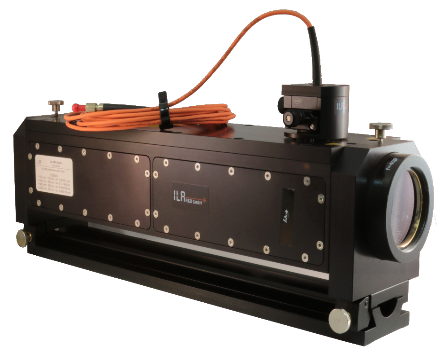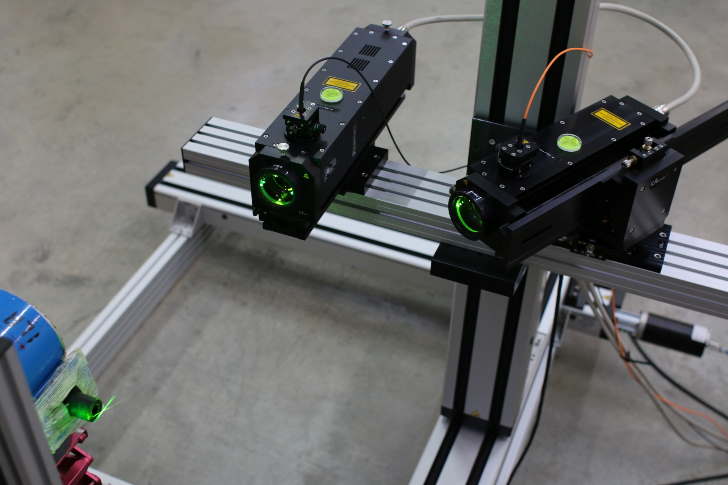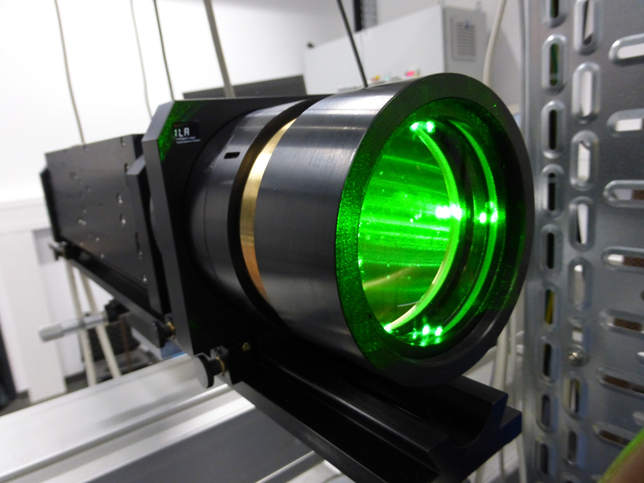LDV
2D LDV System
The 2D LDV System Probe is based on our fp50-shifted probe’s design, it follows the ILA’s approach of building high reliable LDV Probes with incorporated lasers and without optical transmission fibers. The greatest advantage of our approach is that between 80 to 90 % of the laser power is transferred to the measurement volume, furthermore it involves a reduction of costs due to the omission of the additional optical fibers.
Two Nd:YAG lasers are built in the probe, with wavelengths of 532 and 561 nm and a maximal power up to 500 mW. The complete probe body is milled of one piece resulting in a extreme high long term stability. Compared to other commercial probes with integrated laser sources the probe head is of relative small size and weight so that it can be easily moved by a traversing system.
- Simple setup and alignment
- Long term stability
- High laser power transferred to the measurement volume
- High measurement accuracy
- No optical transmission fibers
- Little Dispersion Effect
- Good Visibility
- Low size, low weight
- Automatic traversing (optional)
- Robust transportation suitcases

2D LDV Probe: small size, extremely stable
Standard 3D LDV System
The conventional setup for a 3 component LDV System contains two probes, one 2D Probe and one 1D Probe orientated under an angle of 45 to 30 degree. In this configuration two components of the velocity can be measured directly with the 2D Probe, the third component is calculated from the measuring result of the 1D Probe. Both probes are mounted on a common rail. The positioning of the two probes can be done by a stable 3D Traversing System. The signal separation of the three components is realized by using different wavelength (532 nm, 553 nm, 561 nm). The complete system contains one 1D and one 2D Controller and a PC based data acquisition system.

Conventional 3D LDV System with two probes
Submerged 3D LDV System
For LDV measurements in large towing tanks ILA R&D developed a 3D LDV optic inside a streamlined under water casing. The modular system allows individual setups for 1D, 2D or 3D underwater LDV systems. Inside the casings the proven 1D and 2D LDV Probes of the ILA LDV Systems are integrated. So the laser sources are directly integrated in the probes. Therefore, no cost effective single mode fibers and complicated fiber adjustments are necessary.
Both probes are equipped with a Beam Expander for long focal distances. This enables a short measuring volumes length of less than 3 mm for a distance of 700mm between measuring volume and probe body. The beams are led out of the submerged casing by two adjustable mirrors. So the overlay of the two measuring volume is easily done. Because the intersection angle of the components is not changed during the overlay procedure the probes can be calibrated and certified by PTB, the National Metrology Institute in Germany.
The complete 3D LDV System is mounted on a stable 3D Traversing System fixed on the gantry of the towing tank.



Submerged 3D LDV Probe for towing tanks
Beam Expander
In LDV measurements, the size of the measuring volume depends on the beam distance, the beam diameter and the focal length of the LDV Probe optics. Typically, fitting a standard LDV Probe such as the ILA fp50 with a long focal length front optics, say f=800 mm, will result in a measuring volume length of ca. 10mm. Often this is not sufficiently small to achieve a high spatial resolution in velocity measurements.
Combining the ILA fp50 standard LDV Probe optics with a beam expander leads to a significant shortening of the measuring volume. For a focal length of 800 mm, the length of the measuring volume can be reduced by more than 50%, to 4 mm. Furthermore the smaller size of the measuring volume results in higher illumination density in the measurement volume. This means higher signal quality, and higher data rate.
The ILA Beam Expander uses a Galilean telescope design. The beam distance is expanded from 45 mm to 70 mm. The focal distance of the front lens can be adjusted by distance of the lenses inside the Beam Expander. The Beam Expander is mounted directly onto the ILA fp50 LDV Probe.


